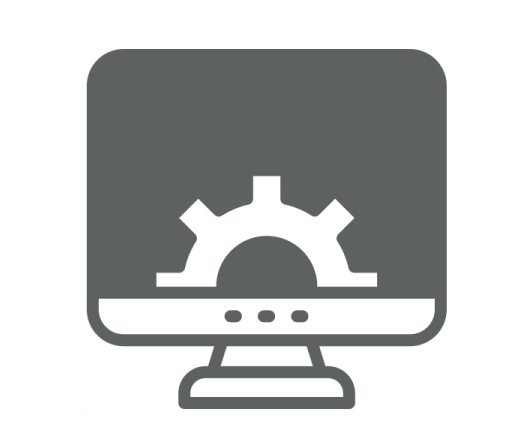Top 10 Current Issues in IT – Current Issues in Information Systems Article
For this assignment we are required to write a top 10 list of issues that the IT industry is currently facing. The list should try to avoid broad topics such as the following to focus on: Outsourcing, Centralized versus Decentralized, Mergers and Acquisitions, Object Oriented Methodology, Security, Telecommuting, Enterprise Architecture and Standards, Portfolio Management, Programmers as a Commodity, Knowledge Management, Grid Computing, and Biometrics.
1.)SEO Search Engine Optimization – the process of increasing the amount of visitors to a web site by ranking high in the search results of a search engine for specific keywords or phrases that are most relevant to a business. Simply put the higher a web site ranks in the results of a search, the greater the chance that that site will be visited by a user. It is common practice for Internet users to not click through pages and pages of search results, so where a site ranks in a search is essential for directing more traffic toward the site.
SEO helps to ensure that a site is accessible to a search engine focusing on enforcing valid web code, traffic analysis, keyword and phrase analysis, product understanding, internet marketing, content development, and other human factors such as ad placement. All in all SEO improves the chances that the site will be found by the search engine.
2.)SPAM – %30 of all Internet traffic is claimed to be SPAM related. This includes ad-ware, junk mail, pop up traffic, etc. Consequently, there are many organizations, as well as individuals, who have taken it upon themselves to fight spam with a variety of techniques. But because the Internet is public, there is really little that can be done to prevent spam. However, some online services have instituted policies to prevent spammers from spamming their subscribers. This is a step in the right direction.
3.)Data Ownership – refers to both the possession of and responsibility for information that may or may not have value. Ownership implies power as well as control. The control of information includes not just the ability to access, create, modify, package, derive benefit from, sell or remove data, but also the right to assign these access privileges to others at any time. With the sale of myspace.com for 581 Million one could ask why is such a site so valuable?
4.)Google Sandbox – There is no official response from Google but the trend seems to be that when new sites are first uploaded they receive close Google attention and decent rankings for their keywords and phrases. After two to three weeks these new sites drop in the rankings and pages from these sites drop from the index as well. There is no real mention or data that shows how long this “phase” lasts but exports are suggesting somewhat extreme measures like allowing spiders into the site before its completion, perhaps getting the site over the Google drop phase before the initial role out.
5.)Online Learning – With many players in the online learning, CMS (Content Management Systems), and portal business right now competing for the same customer; there is much progress being made to lour new customers in one direction over the other. The big three are WebCT, Blackboard, and Moodle; each with a different business model and each showing benefits in different areas.
6.)Blogs – a blog is a Web page that serves as a publicly accessible personal journal for an individual, group, or organization. Typically updated daily, blogs often reflect the personality of the author and are a proven method for making a regular income if the author can capture an audience. However, with often times very personal information so accessible is there a downside?
7.)Common Data Security Architecture – this is Intel’s vision for managing hardware cryptography. The advantage of using a hardware processor over software is that hardware is considered more secure because as long as cryptographic operations are in software, the sensitive key material will be in software. Intel’s cryptographic co-processor can compliment the software-based security framework released by Microsoft called Authenticode. Authenticode is Microsoft’s technique for securing digital signatures on the Internet. While not guaranteeing bug-free code, Authenticode technology is designed to identify the publisher of the code and to assure end users that software has not been tampered with before or during the download process.
8.)Identity Theft – identity theft is the deliberate assumption of another person’s identity. Usually to gain access to their credit or frame them for a crime. However, less commonly it is used to enable illegal immigration, terrorism, espionage, or changing identity permanently. It may also be used in a variety of forms of blackmail, especially if medical privacy, political privacy, or other personal information has been leaked and thus possibly resulting in serious consequences like loss of job or marriage.
9.)FTTP – Fiber-to-the-premises is now being deployed to homes and businesses in Virginia as well as in parts of Delaware, Maryland, Massachusetts, New York and Pennsylvania by Verizon. Thus bringing the total to nine states where work is under way. Verizon’s FiOS broadband Internet packages come in speeds of up to 5 Mbps, 15 Mbps and 30 Mbps, with upstream speeds of up to 2 Mbps for the first two products and 5 Mbps for the third. The 5 Mbps service sells for $34.95 per month, when purchased with a package of Verizon services, and $39.95 when purchased separately.
10.)PPC – (Pay Per Click) A model of web site inclusion where you pay an agreed amount every time a user clicks to your website through a search engine. Google, MSN, and Yahoo all offer these services. Usually you buy the position you want to rank at, for a particular keyword or phrase and pay the search engine every time it generates a hit to your website.
